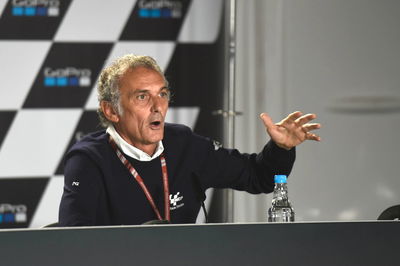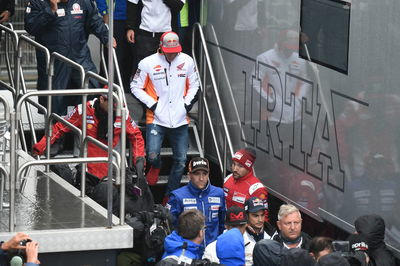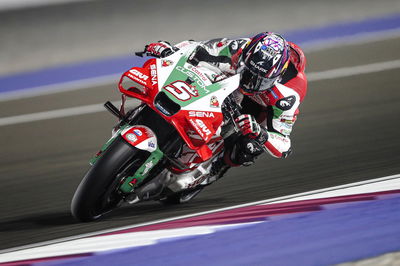Silverstone circuit surface changed ‘from March to July’
Following the dramatic cancellation of the British MotoGP, FIM safety representative Franco Uncini says the Silverstone’s resurfaced track changed between his inspection at the start of the year to this weekend and hopes for answers following an investigation.

Following the dramatic cancellation of the British MotoGP, FIM safety representative Franco Uncini says the Silverstone’s resurfaced track changed between his inspection at the start of the year to this weekend and hopes for answers following an investigation.
MotoGP race director Mike Webb made it clear that the Silverstone’s new track surface was the cause of the cancellation – the first round to be completely canned since the 1980 Austrian round – with Sunday’s heavy rain making track conditions unsafe to race following a decision from the majority of MotoGP riders in a safety commission meeting.
Webb feels blame rests on the resurfacing work and lack of drainage having run wet races at Silverstone in previous years without any problems.
Silverstone is set to run a six-week investigation into the new circuit asphalt, which was completely resurfaced in February, and gained FIM approval following an inspection by Uncini earlier this year.
FIM safety head Uncini says aside from small adjustments to smooth out bumps on the new surface there were no signs to be concerned about the track before the British MotoGP race weekend.
“I came at the beginning of the year when they laid down the new asphalt that was at the end of February. At the time I did the inspection and the tarmac looked very good, a small matter of bumps, connection and also good grip,” Uncini said. “A factor that was confirmed by Cal Crutchlow who did a test on a bike one month later. He confirmed two places that I said that were a little bumpy.
“The circuit reacted and adjusted these two bumps and they said it was really perfect at the time. But slowly we discovered during Formula 1’s Grand Prix that it was bumpy.
“It was from March to July that was the situation of the tarmac [changed] – I don’t know what happened. They will do a deep study in the next six weeks to see what is the reason because in February and March it was good.
“This is the first time and any asphalt did this in the past 20 seasons. It has never happened like this before.”
Uncini has also revealed MotoGP had hoped for more extensive work following the reports of a bumpy surface during the F1 British Grand Prix which proved unachievable due to Silverstone’s own race calendar over the summer.
Despite the fears over the bumps, with most riders complaining about the situation following Friday’s practice sessions, it proved to have little bearing once the rain arrived on Saturday at Silverstone.
In a heavy downpour midway through FP4, multiple riders went off due to aquaplaning at Stowe corner which saw Tito Rabat accidently hit by Franco Morbidelli’s Marc VDS Honda bike and sustain fractures to his right femur, tibia and fibula. The Spanish rider required emergency surgery and was air lifted to hospital.
With heavy rain forecast for Sunday it triggered a schedule shake-up to target the dry conditions but after the rain arrived midway through Moto3 warm-up it made racing unsafe due to the standing water on track.
Uncini concedes no tests were carried out on the new Silverstone surface in the wet, assuming the track would be safe in the rain, with MotoGP and FIM placing ‘trust’ in the resurfacing work having never faced issues before.
“There is no system to check the track in the wet,” Uncini explained. “We don’t check the track in the wet, we check in the dry and presume in wet it should be okay with the correct drainage and incline of the track.
“We only trust the company who makes the asphalt and trust the circuit. We just check that the circuit is not bumpy, has good grip, and is not slippery and that it is well done – there is no gap in between the kerbs and the asphalt.
“All these examples we cannot check when wet, for example when wet how wet does it need to be? We need to consider whether it would be okay or not.
“What is the system to check that? Effectively the only system is to check with a MotoGP bike on a completely wet track which is quite impossible.”











